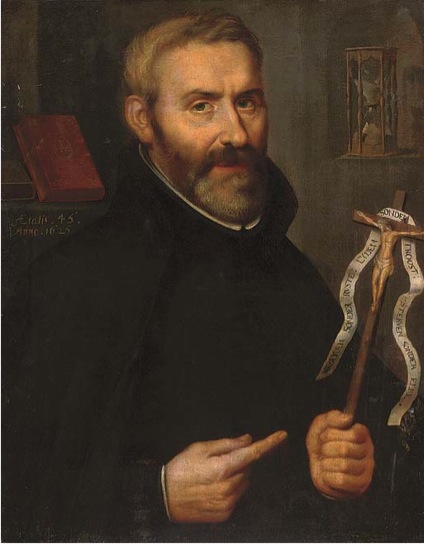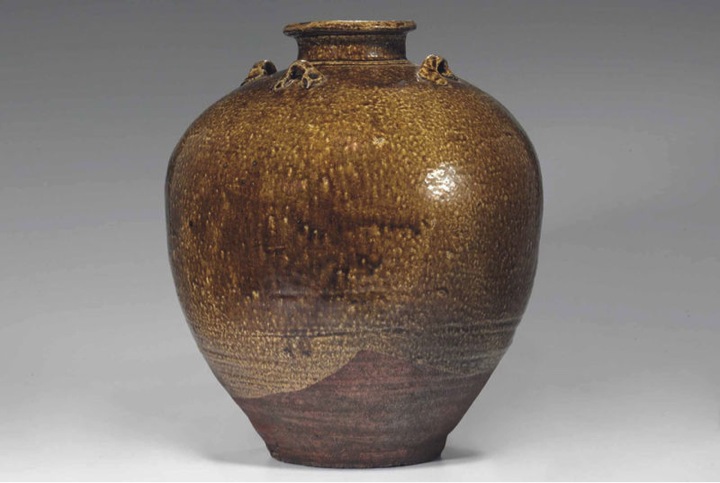Tea and Jesuits III
The earliest Western account of chanoyu 茶の湯 was written by the Jesuit João Rodrigues, a serious practitioner of tea in the late sixteenth century. Born in Portugal, Rodrigues landed in Japan in 1577 at age fifteen and spent over thirty years in the islands as a missionary, scholar, and diplomat. Trained by the Jesuits in Japan and fluent in Japanese, his function as translator facilitated his entry into the rarified levels of Japanese society where he met many of the most influential political figures of the day. His personal practice of tea served to advance him within Japanese circles at a time when aesthetic interests and intellectual sophistication were de rigueur. Well versed in both Western and Eastern cultures, he was a sympathetic and knowledgeable bridge between the two.
Rodrigues wrote extensively about chanoyu in his treatise on Japanese tea, Arte del Cha.[1] He identified tea with extremely high production standards, quality, and great cost, describing in detail the annual harvest from Uji, which produced the finest tea for the exclusive use of the shogun, and further observing, “the best type of tea, used in gatherings of nobles and rich men, is very expensive…”[2]
His writing showed the depth of his understanding of tea, including the philosophical and social bases for chanoyu. He explained not only the methods and procedures of the art, but also the deeply Zen search for the “contemplation of things and nature” through tea and its “emphasis on frugality and moderation, without any slackness, indolence, or effeminacy.”[3] He dwelt on the purpose of tea as “courtesy, breeding, moderation, peace of body and soul, humility, without pomp or splendor” but stressed again “the people who practice cha are nobles or lords because the expense incurred therein is indeed great.”[4]
Rodrigues also recognized the role of chanoyu in changing social values and “the reform of people as regards to good breeding, modesty, outward humility, and the avoidance of hypocrisy and a host of useless things employed solely out of ostentation.”[5] He observed that the art of tea blunted the martial set of the samurai elite when knowledge of chanoyu was “turned to artificial and secular affairs, whence they have conveniently improved some offensive and defensive weapons.”[6] Tea was revealed by Rodgrigues to be a civilizing force that served the social and political designs of the Japanese military aristocracy.
That João Rodrigues was a devoted practitioner of tea, there was no doubt, but his enthusiasm for Japanese culture fostered suspicion among his Jesuit brethren who were less than supportive of the adoption of indigenous Asian customs, particularly those of Japan mandated in 1581 by the Visitor of Missions, Alessandro Valignano. In 1612, one such detractor, Francisco Pires, noted with distain that Rodrigues had taken over rooms in the Jesuit residence in Nagasaki, converting them into a suite for chanoyu with its own steps and entrance.[7] Yet, Rodrigues remained an exemplar of the Jesuit order in Japan and representative of the Society’s collective understanding of Asia, a perception produced by an individual and profoundly personal cultural immersion that ultimately served to enlighten and excite the West in the seventeenth century.
As for chanoyu, the practice of drinking tea came under Western criticism, the barbs aimed at the excessive worth of the art objects used in its preparation and service. In his biography of Francis Xavier of 1600, the Portuguese Jesuit João de Lucena produced a slight against connoisseurship and chanoyu: “The Japanese attach a value to the most trifling and ridiculous things, as are the stuffs used in preparing a decoction from the herb which is called cha.”[8] Such remarks foreshadowed the attacks on tea itself from the scientific community in Europe during the seventeenth century.
Figures
1.
Paulus Moreelse (Utrecht 1571-1638), circle of
Portrait of a Jesuit Priest, dated 1625
oil on canvas, unframed
Christie’s
2.
Chigusa
Tea-leaf Storage Jar, 13th-14th century
Southern China, Southern Song or Yuan dynasty
Stoneware with iron glaze
Freer Gallery of Art
Notes
[1] João Rodrigues, S.J. (Portuguese, 1558–1633), Arte del Cha (The Art of Tea), José Luis Alvarez-Taladriz, ed. (Tokyo: Sophia University, 1954), see also João Rodrigues, Historia da Igreja do Japão (History of the Japanese Church), João do Amaral Abranches Pinto (Macao: Noticias de Macau, 1954-1956), 2 vols., chapters 12 and 32-35, esp. ch. 12, sec. 9 and ch. 32, respectively; João Rodrigues, This Island of Japon: João Rodrigues’’ Account of 16th-Century Japan, Michael Cooper, trans. (Tokyo: Kodansha International, 1975); and João Rodrigues, Nihon Kyōkai Shi, Doi Tadao et al., trans. (Tokyo: Iwanami, 1967).
[2] João Rodrigues, S.J. (Portuguese, 1558–1633), Historia da Igreja do Japão (History of the Japanese Church), João do Amaal Abranches Pinto (Macao: Noticias de Macau, 1954-1956), 2 vols., chapters 12 and 32-35, esp. ch. 12, sec. 9 and ch. 32, respectively.
[3] Michael Cooper, “The Early Europeans and Tea,” Tea in Japan: Essay on the History of Chanoyu, Paul Varley and Kumakura Isao, eds. (Honolulu: University of Hawai’i Press, 1989), p. 125.
[4] Ibid.
[5] Ibid., p. 130.
[6] Ibid.
[7] Ibid., p. 121.
[8] João de Lucena (Portuguese, 1500-1600), História da Vida do padre Francisco Xavier do que Fizeram na Índia os Mais Religiosos da Companhia de Jesus (Lisbon, 1600) Book VII, ch. 4
A book based on the papers of Fernam Mendez Pinto (Portuguese, 1510-? after 1558) acquired from his widow. See S. Rodolfo Dalgado, Influencia do Vocaulario Portugues em Linguas Asiaticas (Lisbon: Academy of Sciences, 1913), vol. 1, pp. 50-51 and Sebastião Rodolfo Dalgado and Anthony X. Soares Portuguese vocables in Asiatic languages: from the Portuguese original of Monsignor Sebastião Rodolfo Dalgado, Anthony X. Soares, trans. (New Delhi: Asian Educational Services, 1988), Volume 1, pp. 93-95, esp. 94.


